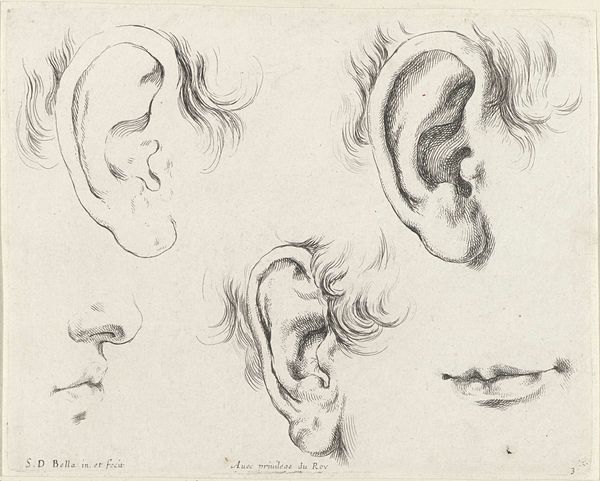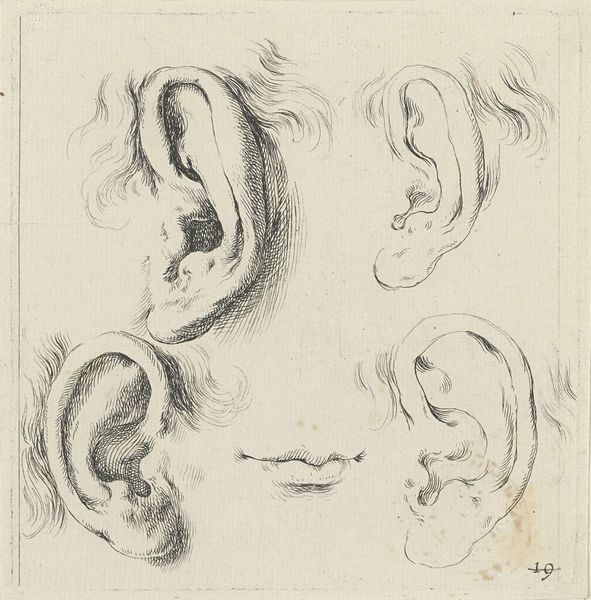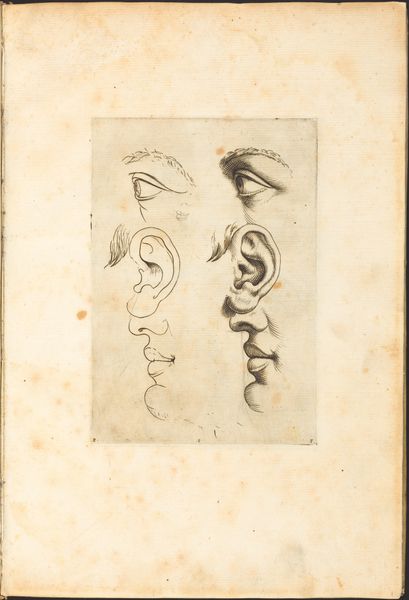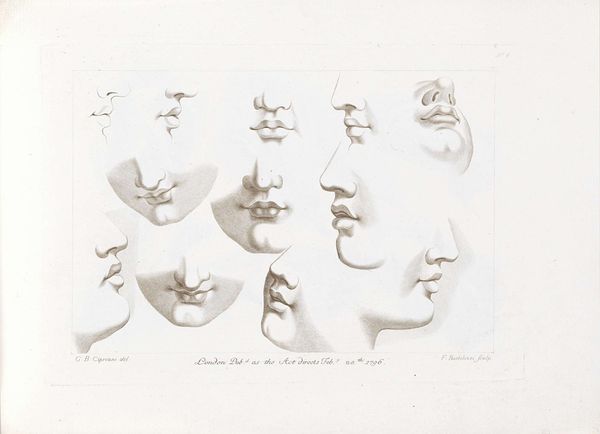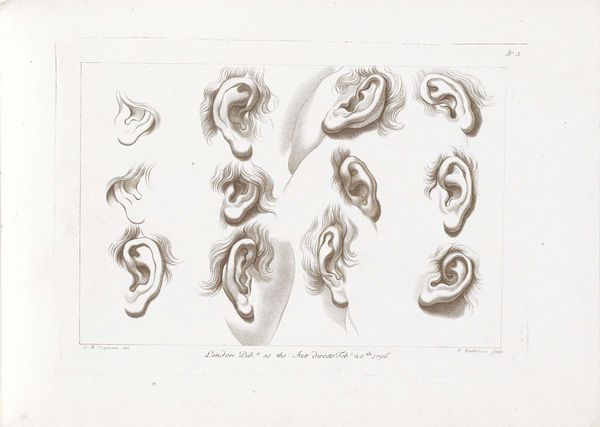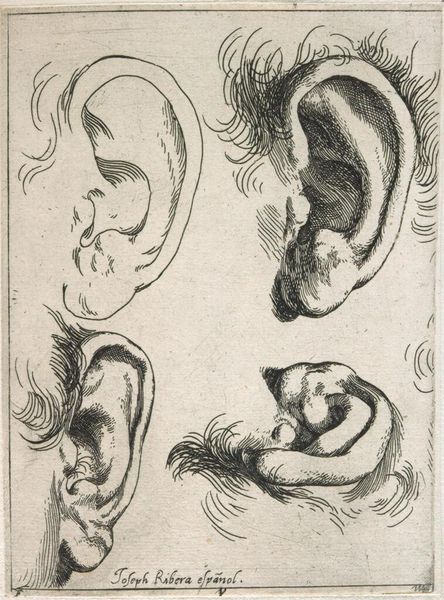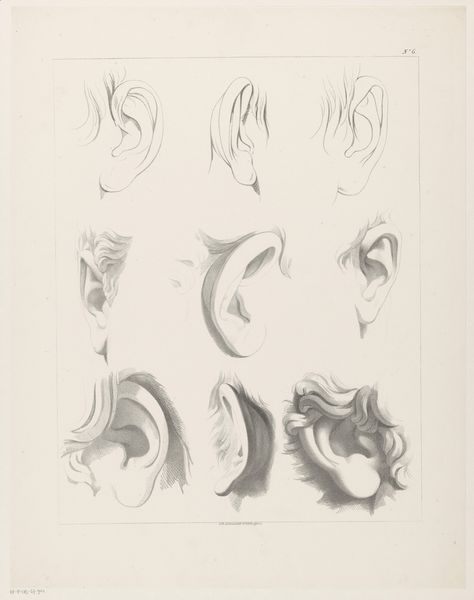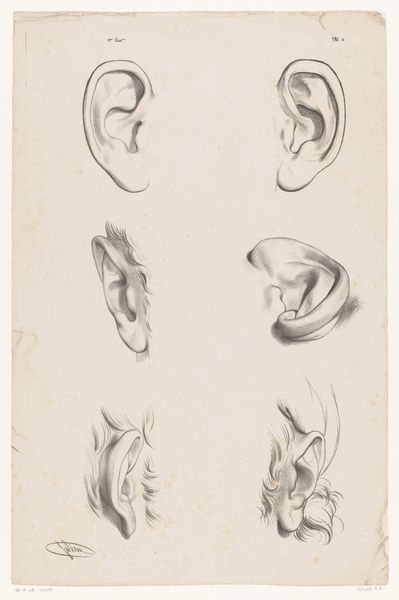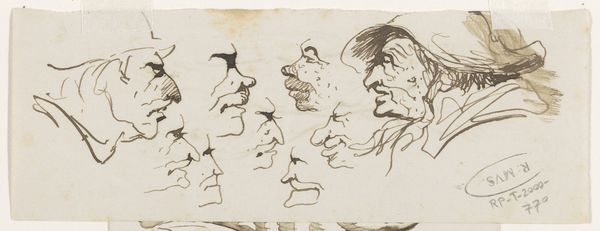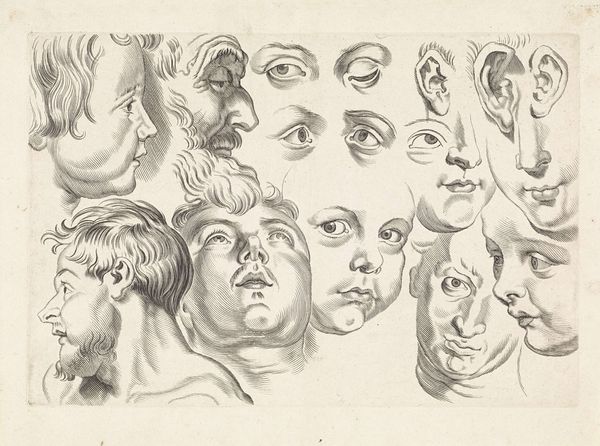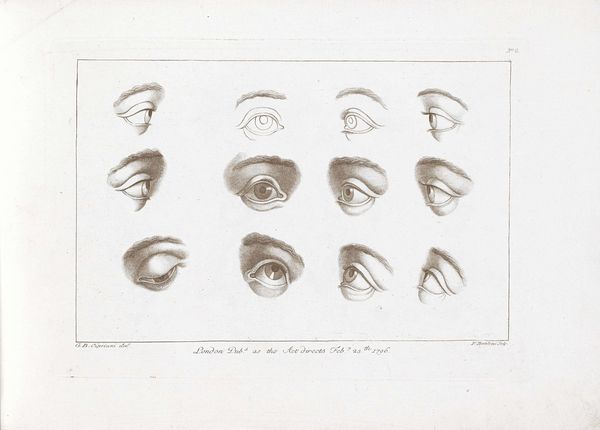
drawing, paper, ink
#
portrait
#
drawing
#
baroque
#
pencil sketch
#
figuration
#
paper
#
ink
#
ink drawing experimentation
#
academic-art
Dimensions: height 168 mm, width 237 mm
Copyright: Rijks Museum: Open Domain
Editor: Here we have an ink drawing titled "Studie van verschillende oren," or "Study of Different Ears," dating back to somewhere between 1675 and 1711. It's currently housed at the Rijksmuseum, and is attributed to an anonymous artist. The composition is fascinating...almost clinical, in its presentation. What strikes you about it? Curator: Well, beyond the anatomical curiosity, I'm compelled to consider its socio-political context. In a period of burgeoning scientific inquiry, what did the ear symbolize? Think about the power dynamics inherent in listening versus being heard. Who had the privilege to be listened to? Whose voices were systematically ignored? Editor: So, you see these ears as perhaps representative of broader issues of power and voice during the Baroque era? Curator: Precisely. The very act of studying and cataloging, as demonstrated by this "Study," reveals a desire to understand, perhaps even control, a facet of the human form. Consider, too, how physiognomy – the pseudo-science of judging character from physical features – was gaining traction at the time. Were these ears being studied not just for their form, but for what they might reveal about the individuals they belonged to? Were judgements being made based on ear shape? Editor: That adds a disturbing layer I hadn't considered. It goes beyond just a neutral study of anatomy. Curator: Absolutely. And let’s also think about accessibility and who might be seeing the artwork. This may have been a tool of academic training, a document of scientific understanding. So this image provides insight into understanding both artistic training and also intellectual ideas from the Baroque era. Editor: I never would have thought of it that way. This seemingly simple drawing opens up such a rich conversation about the historical and social forces at play during its creation. Curator: Indeed. And that’s precisely why it’s essential to look at art through an intersectional lens, considering identity, power, and the often-silenced voices of history.
Comments
No comments
Be the first to comment and join the conversation on the ultimate creative platform.
